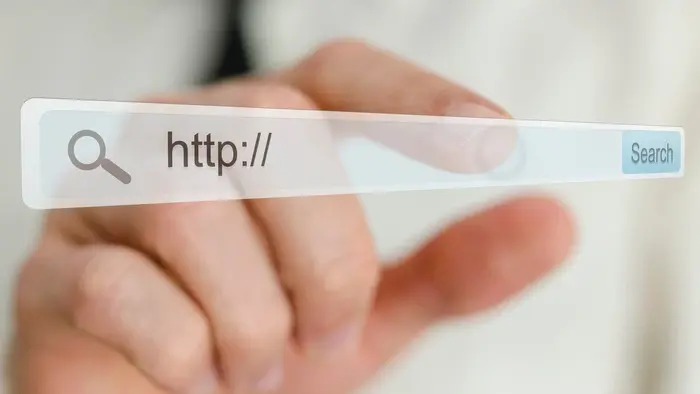6 Surefire Ways to Generate Organic Leads and Increase Traffic
Most marketers struggle to increase traffic to their websites, as there are a lot of ways to get from "point A to point B."
Generating new, qualified leads is crucial for sustaining and growing revenue. In the constantly changing world of digital marketing, your website plays a key part in attracting those leads, and there are two primary methods to accomplish this: Pay-Per-Click (PPC) advertising or organic content. While both aim to attract new potential leads, each has unique advantages and disadvantages.
The questions come down to how you want to use your time and money. Understanding the trade-off is essential for making an informed decision about your business's digital marketing strategy.
Organic leads are created when individuals find your business through non-paid channels, such as search engines, like Google, or when using social media.
Typically, your target audience discovers your website by searching for a product, service, or answer on Google or other search engines. If your website appears near the top of the results, it’s likely due to your website’s effective search engine optimization (SEO), quality content, and social media engagement. Once on your website, they request more information, a quote, or make a purchase.
The key investment for generating organic leads is time: generating organic leads is generally based on the long-term credibility that your website builds.
PPC leads come from paid advertising campaigns where a business places ads on platforms such as Google Ads or social media ads. The business pays a fee each time an ad is clicked or when it reaches a certain number of views. These leads are targeted through specific ad copy, keywords, and user demographics.
PPC offers a quicker route to lead generation by immediately placing your business at the top of search results or in front of selected audiences (in social media? Where are they in front of selected audiences?). However, it requires ongoing monetary investment to maintain lead flow. The cost of each click can vary by industry, the audience you target, and the keywords or topics associated with your ads.
Organic leads are created when potential prospects discover and engage with your business online through non-paid channels. Rather than tracking down leads, organic marketing works by building “authority” online. Building authority occurs when you create content that resonates with the interests and needs of your target audience. That content is typically in the form of web pages, blogs, email marketing, social media, and videos.
Search engines track user activity to gauge a website's relevance to its audience; they value websites whose visitors stay longer, fill out forms, and share what they find online. Building a strong online presence offers long-term benefits by consistently channeling business-relevant traffic to your website.
Organic content can also be more cost-effective. Unlike PPC, generating leads through organic marketing comes at no direct cost. Every time you publish content or every time someone clicks on that content you are improving your chances of being found organically.
However, organic lead generation isn’t an overnight process; it requires time and patience to develop. After all, search engines don’t know your business exists online until you begin creating and posting valuable content on your website. Creating content that potential customers want to read, watch, and engage with doesn’t happen quickly, but it can reap long-term benefits.
Overall, PPC helps provide a fast way to identify a specific audience and drive them to your website. That makes PPC a valuable option for time-sensitive campaigns and promotions or for businesses that haven’t established organic website traffic for a specific topic.
PPC platforms offer you control. You can create ads using specific keywords that attract specific demographics, set your ad budget, easily revise your ad content, and track results to gauge your return on investment. You can monitor campaign performance in real-time which provides clear data on expenditure, number of clicks, and conversion rates within a specific timeframe. This makes it easier to adjust your ad settings to improve your conversion rates.
However, there are potential downsides to PPC. Since it operates much like an auction, PPC can be costly, especially for highly competitive keywords or topics. Businesses with limited budgets may struggle to see a satisfactory return on their investment. Additionally, running PPC campaigns does not guarantee lead conversion. Lead conversion depends on how you structure and set up your ad campaign. How you define your audience, your budget, and your ad’s design and copy will all impact conversion rates.
For optimum performance, it’s best practice to align the ad setup with the ad’s destination. In other words, when someone clicks an ad, where does that ad send them? Will they go to the business home page? Product page? Or will they go to a landing page created specifically for the offer mentioned in the ad? It’s also important to ensure you deliver what you promised in the ad. Is the prospective customer willing to take the action you want them to? Will they buy a product, fill out a form, or schedule a consultation? If not, you may spend a lot of money to generate only a few leads.
Selecting the right strategy to generate new leads online, whether PPC or organic, hinges on your specific goals, budget, and timeline. Combining both methods can be an effective approach.
While paid ads bring quick visibility and traffic to your website, organic efforts are building a foundation for sustained growth. Over time, as your organic lead generation efforts grow, the insights gathered from paid ad performance can further refine organic tactics, creating a cohesive, adaptive, and data-driven marketing ecosystem that maximizes ROI and longevity.
Ongoing optimization and thoughtful planning is the key to success in either approach. By considering the pros and cons of each, you can create a plan that helps achieve your marketing goals.

Most marketers struggle to increase traffic to their websites, as there are a lot of ways to get from "point A to point B."

Ultimately, we all need to drive more business — sales teams are always asking for more opportunities, and marketing needs to deliver. So, as a...

Keeping your club’s waitlist full is no small task. Even with top-tier amenities and a strong community, if potential members can’t find your club...